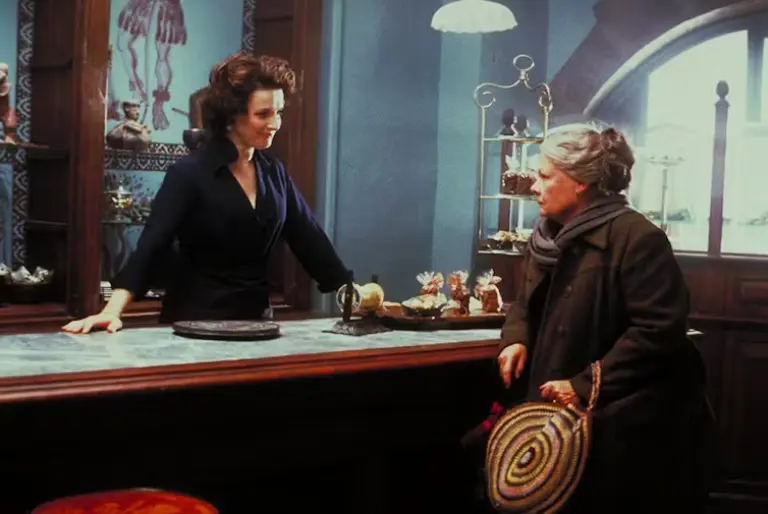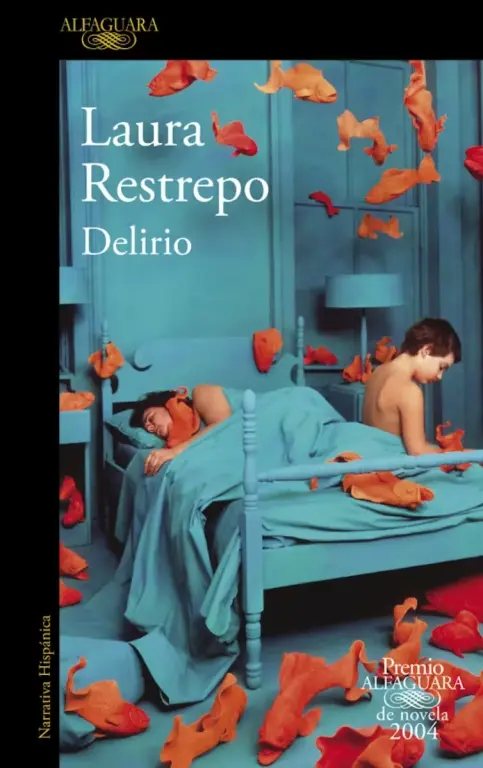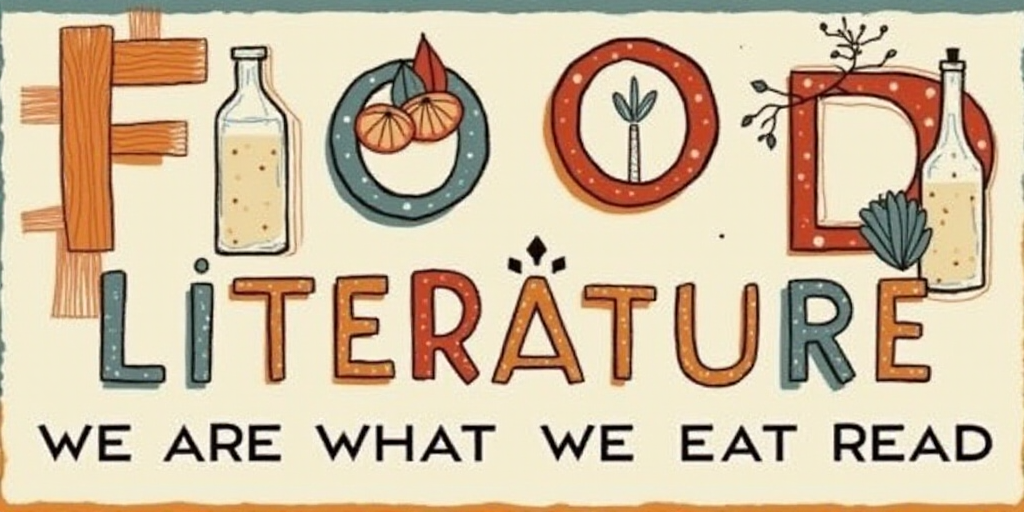This quote comes from Laura Esquivel’s romantic novel, a prime example of magical realism titled “Like Water for Chocolate,” demonstrating how a novel can narrate stories, convey emotions, and preserve identities through food.
“The mole was prepared with the recipe that Tita had inherited from Nacha… an ancient recipe that was passed down from generation to generation, always in the hands of the woman in charge of the kitchen.”
Food Literature: A Bridge Between Cultures, Emotions, and Traditions
Food in literature goes beyond simple culinary descriptions. It serves as a bridge between cultures, emotions, and traditions.
“Chocolat” by Joanne Harris, set in a small French village, illustrates how cacao – thanks to the chocolate shop opened by an outsider in a village– can break down prejudices and unite communities.

Image Link
The chocolatería in Chocolat (as depicted in its cinematic adaptation) becomes a gathering point for various people from the town.
Many food-centric novels also highlight the use of local and seasonal ingredients, a key principle of sustainable cooking. For instance, “Between Powder and Cinnamon” by Eli Brown rescues afrocaribe flavors based on spices like cinnamon and pepper. These ingredients not only give identity to dishes but also promote fair trade and local agriculture.
Another fascinating example where culinary intertwines with narrative is found in Gary Jennings’ “Azteca” trilogy, historical novels recreating pre-Hispanic Mexico. These reconstructions detail how characters prepare dishes using maize, beans, and chili – the basic and inseparable ingredients of the Mesoamerican diet. Through the preparation of tortillas, tamales, salsas, and various stews, readers are immersed in the daily life and rituals of this civilization where food serves as a cultural and social pillar.
Rescue of Ancestral Techniques
Novels also preserve culinary knowledge at risk of disappearing. “Like Water for Chocolate” details methods like the nixtamalization of maize – transforming the grain into dough – or using the metate as a cooking utensil. These processes, though labor-intensive, are more sustainable than industrial alternatives.

Delirio, by Laura Restrepo, received the Alfaguara Novel Prize in 2004.
“Delirio” by Laura Restrepo develops traditional Andean dishes like ajiaco –a type of soup– with native potatoes, whose preparation depends on local biodiversity.
“The Last Chinese Chef” by Nicole Mones stands out for its deep exploration of traditional cooking as a cultural and philosophical treasure. Through Maggie McElroy’s perspective, an American journalist traveling to Pekín to cover the death of a renowned chef, the novel reveals the struggle to preserve these millennia-old practices amidst pressures from modernity and globalization.
Literature in Culinary Education
Food-themed literature can be an educational tool that links food, culture, and sustainability. Leading schools already use it to train chefs aware of their social and environmental impact.
These texts enrich culinary education and combat food homogenization. Moreover, by reviving forgotten recipes, they promote bio-cultural diversity.

Want to receive more articles like this? Subscribe to Cultural Supplement and receive cultural news as well as a curated selection of the best articles on history, literature, cinema, art, or music, handpicked by our Culture Editor Claudia Lorenzo.
For example, the Culinary Institute of America (CIA) includes analysis of literary texts in its food culture courses. Through them, students explore how descriptions reflect historical and geographical contexts as well as changes in diet, techniques, and ingredients over decades, even centuries.
In Italy, the University of Gastronomic Sciences in Pollenzo (founded by Slow Food) uses literary works to discuss the symbolic value of food. In Colombia, Bogotá’s Escuela Taller employs Laura Restrepo’s works to teach local gastronomy.
And in Peru, culinary schools use “The War of the End of the World” by Mario Vargas Llosa to analyze how food reflects social inequalities, fostering a more ethical view of gastronomy.
Beyond the Recipe Book
Through novels and short stories where food is a cornerstone in the narrative, one can understand stories, respect seasons, and value those who cultivate food. In fact, one might even reflect on their own eating habits and their impact, as seen in “Cadáver Exquisito” by Agustina Bazterrica. Here, the author, with raw and direct prose, strips away any romanticism from eating, exposing the dehumanization inherent in industrialized food production.
Bazterrica’s work compels us to critically examine our indifference towards the origin of what we eat and confronts us with the idea that excessive capitalism and commercialization can dangerously blur moral boundaries.
In a world dominated by fast food, these texts serve as a reminder: good gastronomy stems from deep roots, accompanies us throughout our lives, and significantly impacts the cultural and artistic production of every country and region in the world.
Thus, a novel can become a recipe book, transport us through food, or serve as a new influence to experience life through nourishment.






